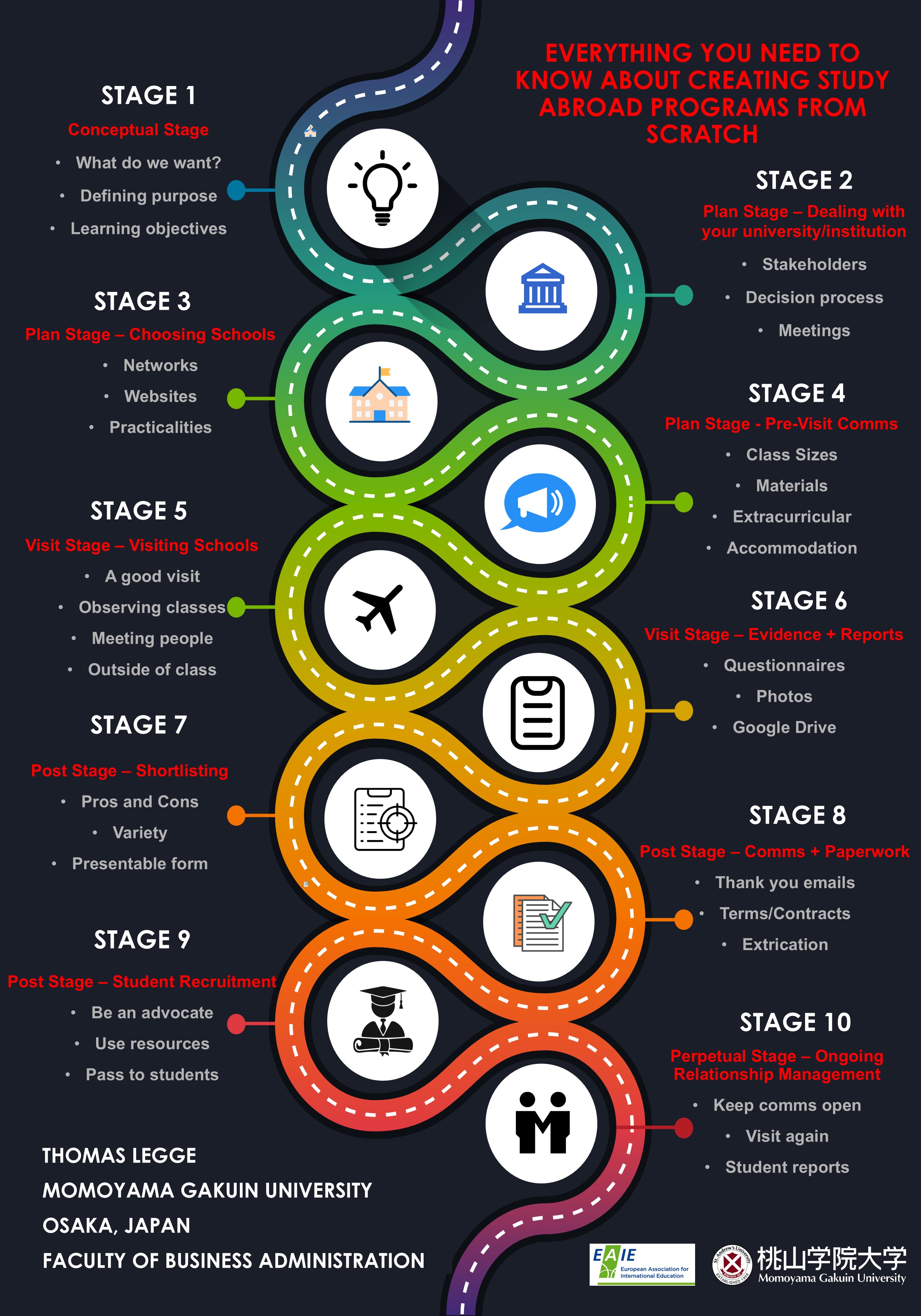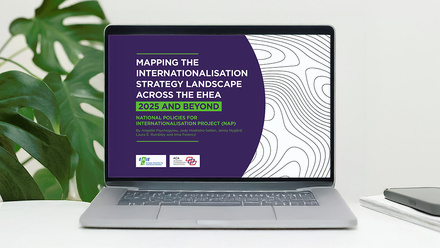A guide to creating study abroad programmes from scratch

Creating a new study abroad programme might sound like a dream opportunity — and it is — but behind every successful exchange lies a detailed, multi-stage process filled with negotiations, school visits, paperwork and follow-up. Over the past five years, I’ve worked to build study abroad programmes from the ground up, visiting more than 20 institutions in the process.
This poster shares a practical, experience-based roadmap for developing a study abroad programme. Designed to be adaptable to various contexts, the roadmap guides stakeholders from initial concept to long-term sustainability.
1. Start with a clear purpose
In the Conceptual Stage, define what you want the programme to achieve. Is it language acquisition? Cross-cultural exposure? Tied to a specific major? Setting clear learning objectives early ensures the entire process stays on track and student expectations can be managed. At this stage you also need to think about the participants – who is this programme for, and what are participants likely to get out of it?
2. Navigate internal structures effectively
The first Planning Stage involves working with your own institution. Meeting stakeholders, understanding decision-making processes and managing internal meetings can make or break a proposal. Find out who is going to make this all happen (and who might get in the way!)
3. Choose potential partner institutions wisely
In the next Planning Stage, research partner institutions through networks and online resources. Consider practical aspects like size, infrastructure and student support services. Beware of glossy websites!
4. Communicate thoroughly before visiting
Good preparation before visits is vital. This includes understanding class sizes, available materials, extracurricular activities and student accommodation. This sets expectations on both sides and makes your visits productive. Try to avoid surprises!
5. Make the most of your site visits
The Visit Stage is your opportunity to see the institution in action — observe classes, meet staff and gauge the culture both inside and outside the classroom. It's also the chance to assess alignment with your goals and to weigh up the school’s ability to deliver what you need.
6. Gather and document evidence
Take photos, gather materials and prepare post-visit reports. This documentation (stored in shared drives, for instance) becomes key when comparing options and reporting to stakeholders, especially when you’re visiting a lot of institutions.
7. Shortlist options with clarity
After visiting, compile pros and cons for each institution in a presentable format. Make it clear why you are suggesting institution and which type of students would benefit from going to each. It’s not always as simple as choosing the "best" institution.
8. Handle communication and contracts professionally
Once institutions are shortlisted, move into formal communications and paperwork. Send thank-you emails, negotiate terms and, if necessary, prepare to extricate yourself from the process if others are to take over. Disengage politely from institutions that don’t make the cut but keep options open where you can. There’s no use in burning bridges.
9. Recruit students through smart advocacy
When the programme is ready, be its advocate. Use testimonials, visuals and clear messaging to promote it. Provide students with resources and let them take ownership of their choices. Then get the students who have been on the programmes to recruit for you next time – students want to hear from their peers.
10. Maintain and grow the relationship
Finally, relationship management is never-ending. Ensure that communication lines remain open with partner institutions, encourage future visits and use student reports to adapt, learn and improve. Good programmes evolve over time.
Why this matters
If you're looking to create or improve a study abroad program, this poster provides a proven framework you can adapt immediately — minimizing risks, ensuring quality, and building trust, all with just a clear vision, practical planning and a willingness to engage deeply with every stage.







